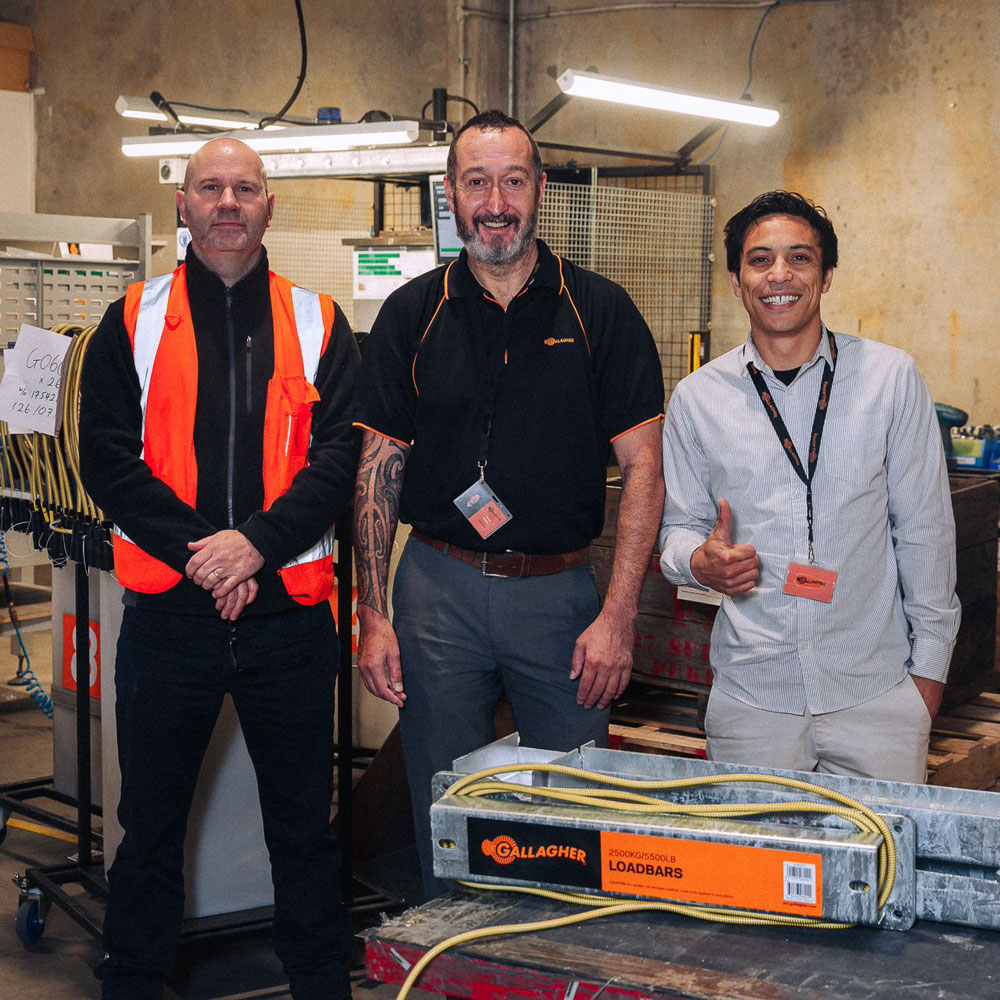Collaboration the key to beat product demand
Sunday, 07 August, 2022

Gallagher’s loadbars are a loved product around the globe, and with the release of our new wireless variant, we’ve seen unprecedented demand for the product. So much so, that our production team in Hamilton have been sent into overdrive in order to keep up! In true Gallagher fashion, some of our team members got together to look at how we can get out in front, and we caught up with a few of them to see what went down.
Speaking with Planning & Process Manager for Operations, Shane Morell, the team had found themselves in a position where production quantity output for finished load bars wasn’t matching market demand.
“A group of us got together, which included Planning, Procurement, some of the Production team, Engineering, and Product Development, to figure what we could do to get on top of things – it was very much a cross functional approach to work out how we could increase our output,” said Shane.
“We set ourselves a weekly triage meeting where everyone would get together, set ourselves targets and try and work out what needed to happen in order to get more stock out of the door. We’d review our progress regularly and test and iterate.”
Their approach to solving the problem is a great example of Better Ways of Working - something the Operations team have been known to champion for quite some time with things like their mindset of continuous improvement, visual planning, and lean thinking.
Better Ways of Working at Gallagher is a programme that utilises agile methodologies and other tools. It will continue to help us get closer to our customers to deliver even better outcomes for our people, our customers and business.
As Plastics Value Stream Manager Kevin Holmes pointed out, “The historic data for load bars has been the same for about two decades. It's never needed any more than what it had, but then almost instantly they said we need 400 to 500 percent more output every day to keep up with demand, so that's what we had to try and accommodate.”
The huge jump in demand is actually a twofold increase; demand for the older wired variant has shot up, while interest in the new wireless loadbar has seen a steady increase since its release.
Plastics Production Manager Jarrod Jones explained that one of the factors slowing things down was how long it took for the cells to cure. “The load cells go through ovens to cure, which of course takes time, and the ovens we had only enabled us to produce a limited amount per day.”
Fortunately, the engineering team came across a really large oven that can fit almost 10 times more than we could, so they made that purchase and had to reconfigure the production space just to fit it in!
Effectively, the team had to split what was one operation into two, and that meant they also had to scale up the resources needed. As well as this, many Hardware Assembly team members were upskilled to be able to be a part of the new process – the team has grown nearly five times in size, and will be able to produce loadcells four times faster!
It wasn’t all smooth sailing, explained Shane. “We were definitely challenged with factors such as the complexity of the problem meaning change wasn’t being seen for up to three months, while external supplier issues were also causing a hiccup. There were a lot of moving parts – our team in Pukekohe has been involved, as well as our external powder coaters.”
But, despite the challenges, the team have pulled off a great win.
“It’s worked really well. Not as fast as we'd like to have done it, but still pretty fast in the big scheme of things. The wider Gallagher business has been very supportive; they've understood the complexity of this, and they've allowed us to go at our own pace because there's no way we could have sped it up any faster.”
Although specific to load bars, the team reckon there are a lot of lessons learnt that can apply for future changes. “We managed to scale at such a quick rate, and I think we will be able to take our learnings across to other areas of production, should we need to in the future,” says Shane.
“All up, there was roughly 25 people from all ends of the business playing a part in this optimisation project, and it's been a fantastic experience.”
Great work Team Gallagher!
Go back to Why Gallagher to find out more about us!